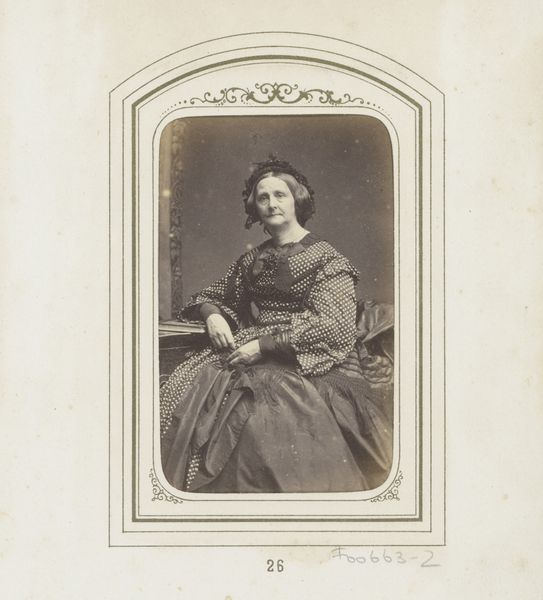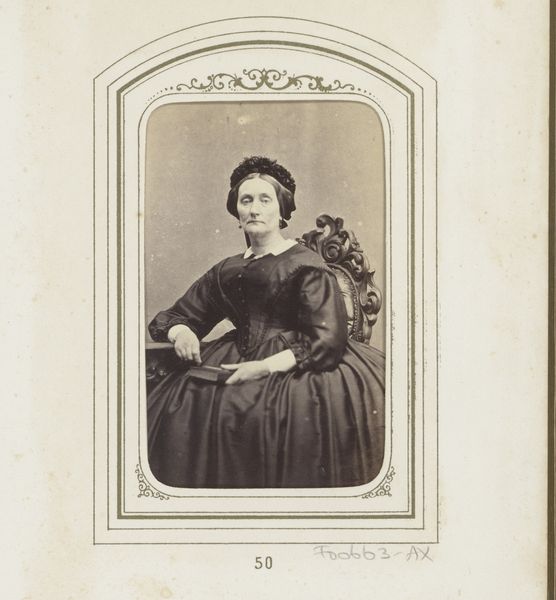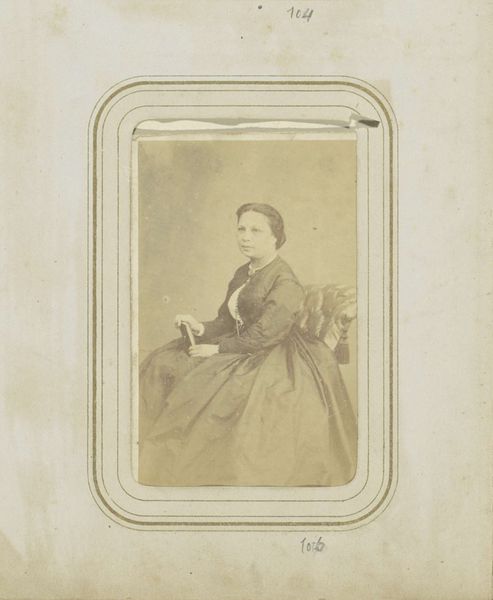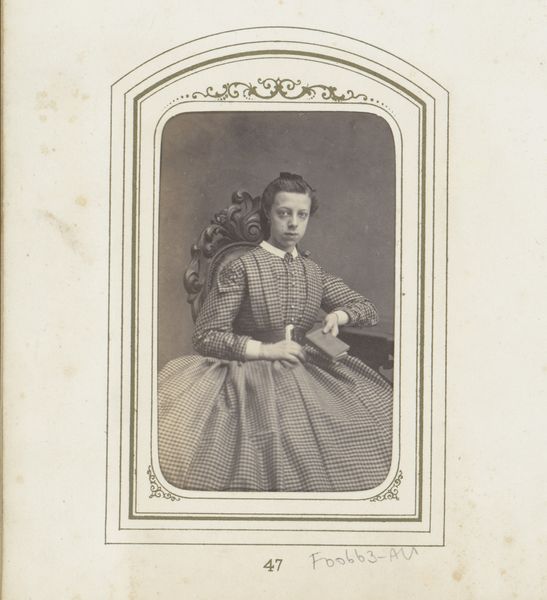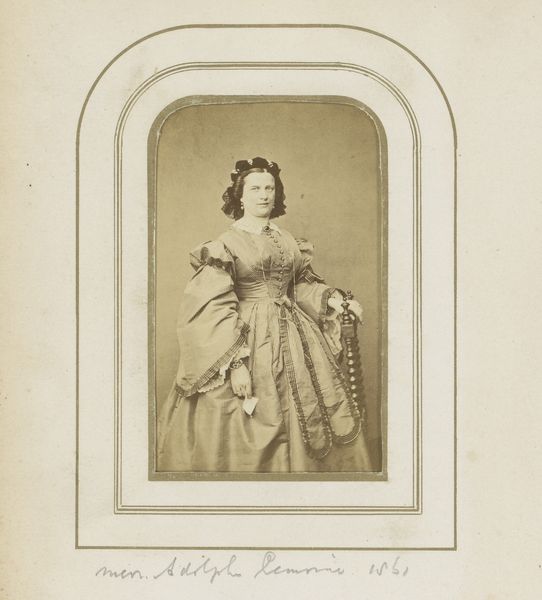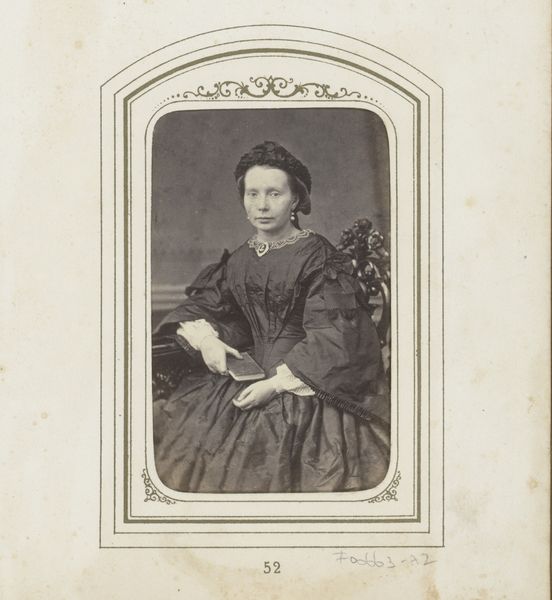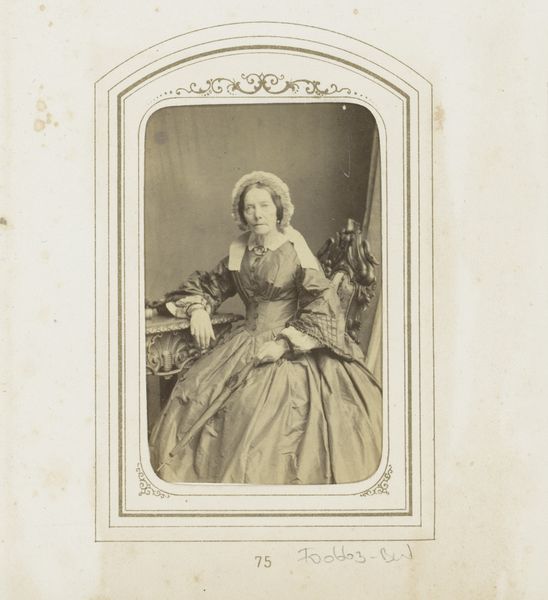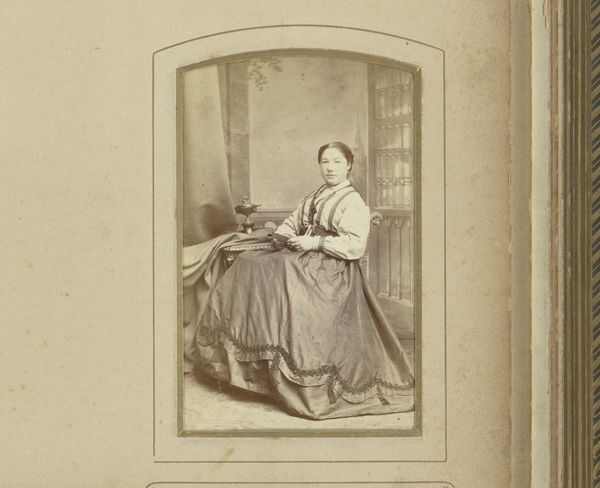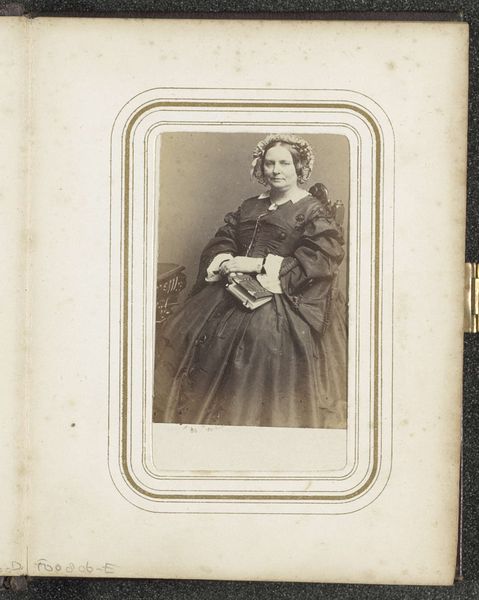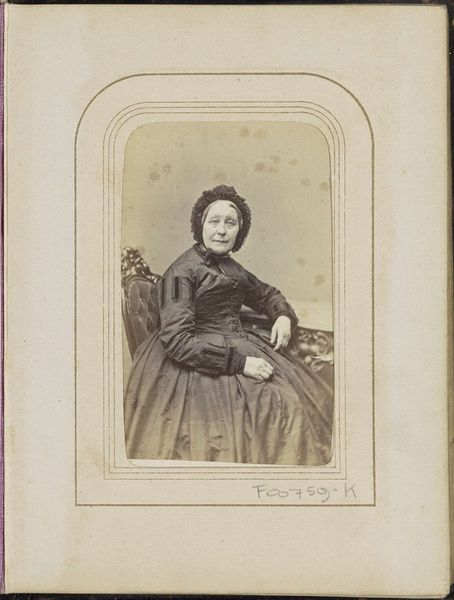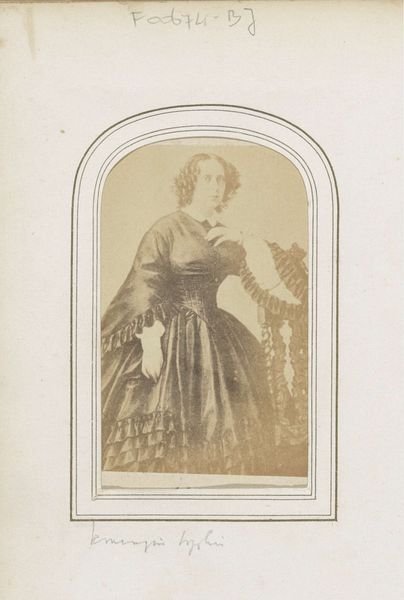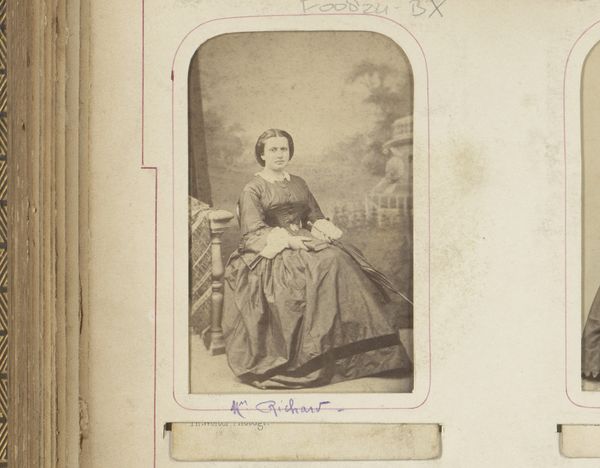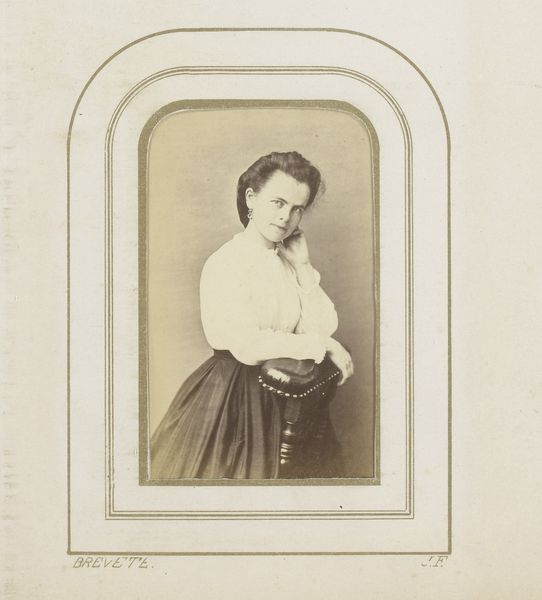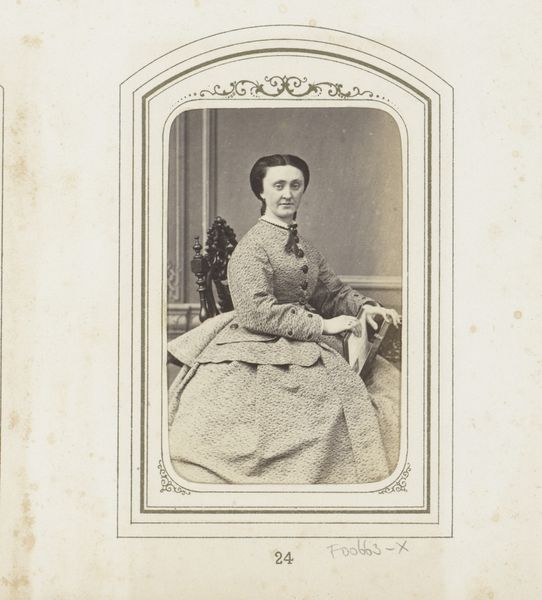
Dimensions: height 85 mm, width 53 mm
Copyright: Rijks Museum: Open Domain
Curator: This gelatin-silver print, "Portret van een zittende vrouw met muts", was captured sometime between 1859 and 1870 by an artist identified as Eduard Fuchs. What strikes you immediately? Editor: There’s a stillness to it. A certain gravity in her posture and expression. It’s like a held breath, very composed with an almost haunting gaze, given the limited tonal range inherent in early photography. Curator: Exactly. And think about what a gelatin-silver print meant then—a relatively new, more accessible medium. This wasn't a painted portrait reserved for the elite. Photography was democratizing representation, capturing a wider swath of society. Consider the labor involved: the photographer's skill in mastering the chemical process, the sitter's endurance posing for a prolonged exposure. Editor: Agreed, and structurally, it's intriguing. The framing, with that decorative arch, almost enshrines her. Her dark dress contrasts with the plain backdrop, guiding the eye immediately to her face. And the cap; notice how its floral design softens the formality. Curator: That formality speaks volumes about social conventions. The woman’s attire, while seemingly simple, suggests a certain economic standing. We are looking at middle-class aspirations, the careful construction of identity through material presentation made accessible, at least partially, via the mechanics of the photographic process. It is not merely about what she possesses, but how photography serves as a means of conveying a message about her status within her community. Editor: Yet there's something deeply personal beyond the social signifiers. Her slightly downturned eyes hint at vulnerability or perhaps weariness. It’s more than just documentation; it’s a capturing of something essential in this individual. The material process freezes this woman, rendering a trace of the artist’s interpretation, even with this being in a gelatin-silver print. Curator: I agree, and this photograph acts as a powerful document. We can discuss photography’s power to record social change and to democratize modes of art, and that would have vast socio-political implications for a world not entirely sold on photography’s importance in our lives. Editor: This photograph really encapsulates its time. Thank you. Curator: Thank you. It’s been illuminating exploring the subject with you today.
Comments
No comments
Be the first to comment and join the conversation on the ultimate creative platform.
